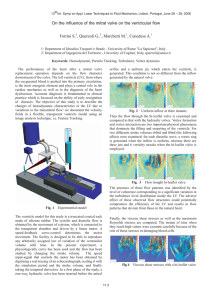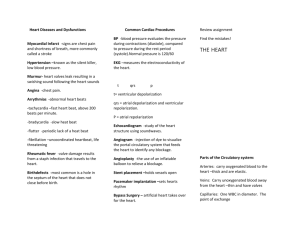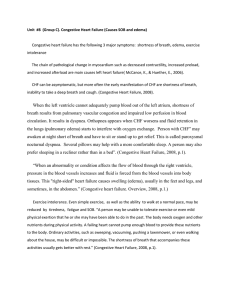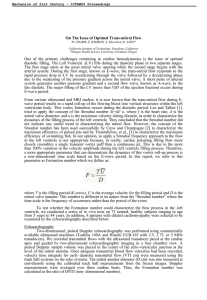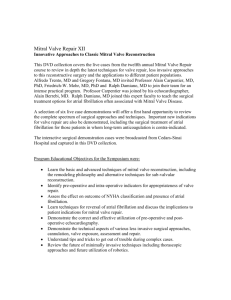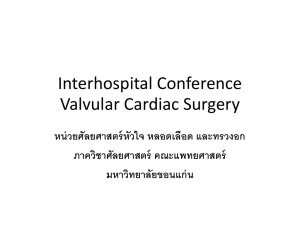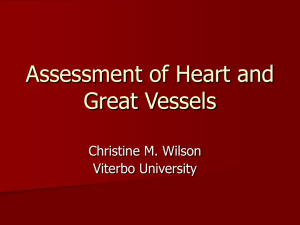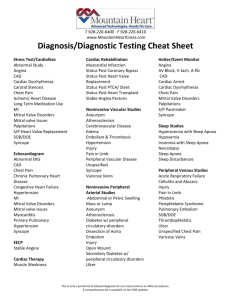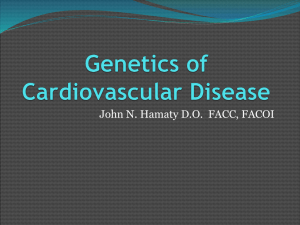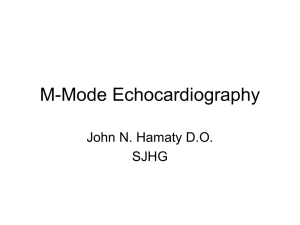CONGESTIVE HEART FAILURE
advertisement
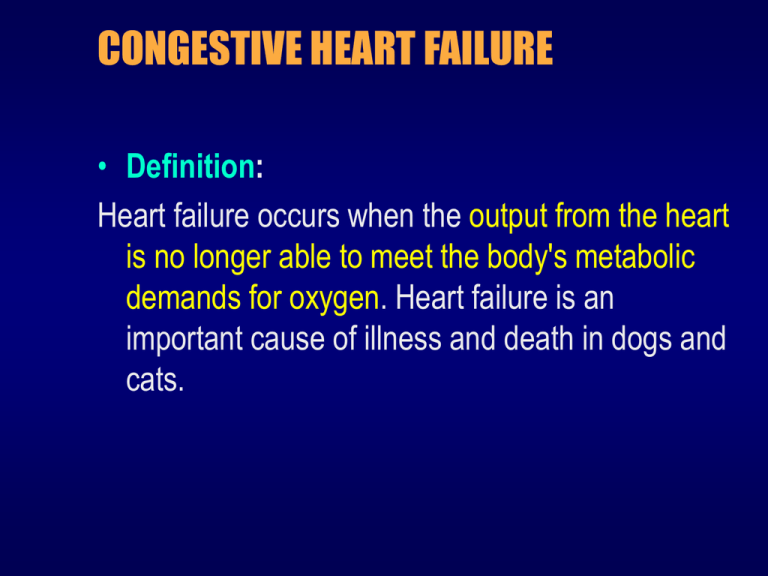
CONGESTIVE HEART FAILURE • Definition: Heart failure occurs when the output from the heart is no longer able to meet the body's metabolic demands for oxygen. Heart failure is an important cause of illness and death in dogs and cats. Etiology 1. Mitral valve regurgitation. The mitral valve is the valve that separates the left atrium from the left ventricle. 1. Regurgitation means that blood moves backwards from the ventricle to the atrium when the ventricle is contracting, instead of flowing out into the aorta and then the body. 2. Mitral valve disease usually occurs from chronic scarring of the valve (often due to bacterial infection), 2. Dilated cardiomyopathy, where the heart muscle becomes distended and incapable of properly transmitting the electrical current of the heart beat (more often seen in older, small breed dogs). 3. Cats, it usually associated with hypertrophic cardiomyopathy, where the heart muscle becomes too thick to work properly, and the chambers are too small to move an adequate amount of blood with each beat Pathophysiology When the ventricle's performance and output decline the body activates several types of compensatory mechanisms in order to try to preserve blood pressure and cardiac output Many of the smaller blood vessels will constrict, or narrow, to The heart rate begins to increase help raise the blood pressure to get out as much blood to the body as possible The body starts to retain sodium and water, also to increase the blood pressure. • When excessive pressure is found in the ventricle during filling, edema begins to occur as fluid begins to seep (ooze) out of the blood vessels, into certain areas of the body, such as • the lung tissue, • around the outside of the lungs, • and into the liver and abdomen leading to the so called congestive heart failure. Clinical signs - Congestive heart failure is divided into left and right sided diseases. - The clinical symptoms of each one are different. A) Left sided congestive heart failure (CHF) (lung edema): 1- Respiratory distress- shortness of breath, and coughing 2- At first these symptoms may just be seen with exertion, but eventually they are seen even at rest. B) Right sided CHF is seen as: 1- Ascites, or fluid accumulation in the abdomen, causing a pot-bellied appearance. 2- Sometimes, fluid accumulates in the chest, around the lung tissue, causing compression of the lung tissue and heavy breathing. In both cases, weight loss can be seen, as well as decreased appetite, Diagnosis 1. History and clinical signs. 2. X ray and ultrasonography: for the mitral insufficiency and the hypertrophic cardiomyopathy. Treatment 1. Diuretic medication to reduce fluid in the lungs and to make the heart work. 2. Vasodilators are also often helpful to reduce the workload on the heart. 3. Diet changes may be necessary to reduce salt (sodium) intake, which in turn reduce retained fluids - especially in the lungs. This decreases the workload for the heart. 4. Reduce exercise regimen to help control signs of CHF. 5. Continued monitoring to maintain a stable condition of CHF. Prognosis • The prognosis for heart failure is generally poor unless the underlying heart disease is amenable to medical or surgical therapy. • Most of the causes are slowly progressive, and patients seldom survive more than 6-12 months with therapy. Heat sound in pet animals (dog and cat) • Questions
